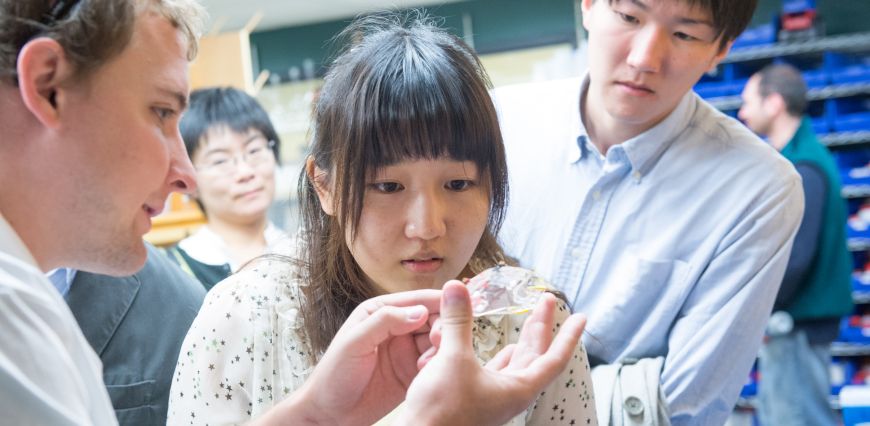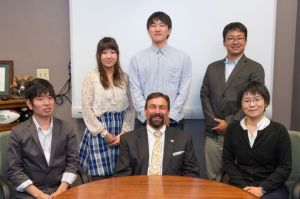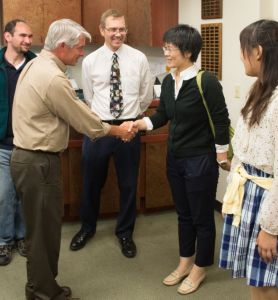
To grow international collaboration in radiation health studies, the College of Veterinary Medicine and Biomedical Sciences recently welcomed four Fukushima University students to campus for educational and cultural exchange.
“One of my professors advised me to come on this trip and learn more about the ongoing radiation research at CSU,” said Naoya Sakamoto, one of four visiting Japanese students. “Going to school in Fukushima, I have a special interest in how others view radiation and the future of radiation research.”

The visit mirrored the Fukushima Student Ambassador Program, which launched in January, when five CSU health physics students traveled to Fukushima for radiological studies, observations, volunteer work and cultural exchange.
The collaboration began in 2013 when CSU radiation scientists – alongside Japanese health and education officials – entered the exclusion zone around the Fukushima Daiichi Nuclear Power Plant to measure radioactivity. In March 2011, Japan was struck by an earthquake and tsunami, causing a nuclear meltdown at the plant and release of radioactive material.
“We hope this will be the first of many educational exchanges with Fukushima University,” said Dr. Mark Stetter, dean of the CSU College of Veterinary Medicine and Biomedical Sciences. “Our college is committed to improving our global network of collaborations in order to fulfill our mission of helping animals, people and the planet.”
Sharing knowledge
For several days in September, the college hosted Fukushima University students Naoya Sakamoto, Atsuki Saito, Atusushi Takahashi and Chisato Omata, along with their chaperone, Kaori Sakuma, a coordinator of international affairs for the Institute of Environmental Radiation.
The visiting students are from the site of the most important radiological event of the new millennium and were eager to learn about CSU’s ongoing radiation research and available graduate programs.

“Fort Collins has higher radiation levels than Fukushima due to its elevation, but everyone thinks that Fukushima is dangerous,” Omata said. “It’s important to learn more about the health impacts of radiation.”
The visit included tours of Rocky Mountain National Park, the James L. Voss Veterinary Teaching Hospital, CSU chemistry labs, the U.S. Department of Agriculture Fort Collins facilities, and Fort St. Vrain Generating Station in Platteville, Colo.
“I’m happy to share our facilities and experiences with the Fukushima students,” said Brett Rosenberg, a health physics graduate student who helped host the Japanese students. “I love being a part of the education experience and have a passion for radiation research.”
He spent two months last summer researching the health impacts of radiation at the University of Tokyo and called his trip to Japan “one of the most powerful experiences any student could imagine.”
The Japanese students also met CSU President Tony Frank, who invited the visitors share their educational interests and reiterated the importance of international partnerships.
“It’s inspiring how resilient Fukushima has been,” said Jac Nickoloff, head of the CSU Department of Environmental and Radiological Health Sciences. “We continue to invest in these international projects to expand our knowledge of radiation and to offer our students a unique educational experience.”